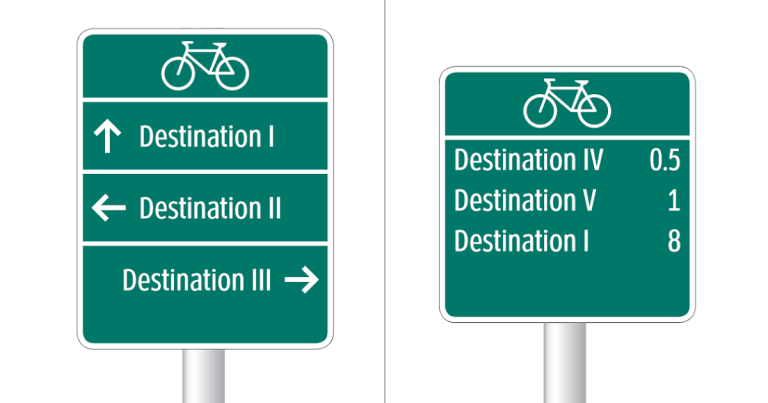How to Prepare for Route Changes: Essential Tips for cyclists
Introduction
Cycling isn’t just a mode of transportation; it’s a passion and a lifestyle choice for many. Whether you’re an everyday commuter, a weekend trail enthusiast, or a competitive racer, one certainty about cycling is its unpredictable nature. Route changes can occur at any time due to various factors like road closures, traffic updates, or unexpected detours. This unpredictability makes knowing how to prepare for route changes an essential skill for every cyclist. Understanding the potential changes and making necessary adjustments is crucial not only for maintaining cycling performance metrics but also for ensuring safety and enhancing the overall biking experience. In this article, we’ll explore comprehensive preparation strategies that incorporate traffic updates, alternative routes, and navigation tools into your travel planning, while touching upon bike maintenance tips to ensure your ride is always in peak condition.
Route Planning and Preparation Strategies
Utilize real-time traffic updates
Having access to real-time traffic updates is one of the most effective strategies to prepare for route changes. Apps like Google Maps and Waze offer live traffic conditions, helping you anticipate potential delays and plan accordingly. By using these navigation tools, you can find alternative routes that mitigate the impact of road closures or traffic congestion.
Visual Suggestion:
Effective Detour Planning
Detour planning is particularly crucial for cyclists, as it involves adapting to unexpected changes without compromising safety or enjoyment. When planning your usual routes, identify possible detours beforehand. Look for quiet streets or paths that may serve as alternative routes in case of disruptions. This foresight helps avoid last-minute stress and ensures a smoother ride.
Utilize GPS Updates
Modern cycling navigation tools often include GPS updates. These devices provide accurate route optimization, ensuring you stay on track even when your plan shifts. Regularly update your GPS device to avoid discrepancies between expected routes and current road conditions, thus enhancing commuting adjustments.
Consider weather conditions
Weather can change rapidly, affecting your cycling plans significantly. Checking weather forecasts in advance allows you to adjust your routes accordingly. For instance, avoiding open or high-altitude areas during strong winds is a smart choice, as is seeking sheltered paths during heavy rain.
Visual Suggestion:

Travel Apps for Enhanced Planning
Utilizing travel apps is another step in how to prepare for route changes effectively. Apps such as Komoot and Strava not only provide detailed maps but also offer community-driven insights about paths and potential hazards. Sharing experiences with fellow cyclists can lead to discovering new alternative routes.
Ensuring Vehicle Readiness and Safety Precautions
Bike Maintenance Tips
An essential preparation strategy involves regular bike maintenance. Ensuring your bike is in excellent working condition reduces the risk of breakdowns and enhances your safety. Regularly check tire pressure, brake function, and chain lubrication. Following a maintenance schedule will improve reliability, no matter what route changes occur.
Safety Precautions and Emergency Kits
Being prepared for any eventuality on your cycling trip is crucial. Carry an emergency kit that includes a tire repair kit, a multi-tool for minor repairs, a first aid kit, and any personal medications you might need. Being equipped for emergencies ensures you’re ready for unexpected situations and can continue cycling with peace of mind.
Visual Suggestion:

Understanding Public Transport Changes
Incorporate Public Transport Options
For routes that integrate with public transport, being aware of schedule changes or disruptions is essential. Using apps related to local transit systems can help you stay updated on any changes. This strategy allows you to incorporate transport options where needed, particularly if part of your route becomes impassable.
Safety Tips for a Seamless Ride
Maintaining safe practices while integrating public transport into your cycling route is important. This includes ensuring your bike is correctly set for easy transport, understanding station accessibility, and following best practices to avoid accidents during transitions between cycling and using public transport.
Advanced Techniques for Cyclists
Training Techniques for Adaptability
Preparing for route changes goes beyond navigation tools. Enhancing mental resilience through consistent training allows cyclists to adapt better to sudden changes. Practices like interval training for cycling improve endurance, helping you maintain performance despite unexpected alterations in your route.
Optimizing Cycling Cadence
Cycling cadence, the rate at which a cyclist pedals, is an important metric that can affect your adaptability to route changes. Focused training to find and maintain your optimal cadence enables you to adjust quickly to different terrains or weather conditions, ensuring efficient energy use during varied routes.
Data, Metrics, and Studies
VO2 Max Improvements for Cyclists
Improving your VO2 max, a measure of your aerobic endurance, can greatly enhance cycling performance and adaptability. Studies have shown that power-based training and interval sessions can lead to significant gains in VO2 max, enabling cyclists to manage unexpected route changes effectively.
Benefits of Using Power Meters
Utilizing power meters allows cyclists to monitor their performance metrics accurately, offering insightful data on energy expenditure and efficiency. This information can aid in route optimization by highlighting areas where performance can be enhanced, making it easier to adjust cycling strategies on-the-fly.
User Intent and Benefits
How to Improve Endurance with Route Planning
Strategically planning routes with variable terrains can improve endurance over time. Adjust your cycling workouts to include different challenges, such as hills or long-distance rides. This not only enhances your physical strength but also prepares you for any route changes that demand increased stamina.
Cycling Techniques for Beginners
For beginners, learning how to prepare for route changes can streamline your introduction to cycling. Starting with straightforward routes and gradually incorporating alternative routes and navigation tools helps build confidence and competence in managing your cycling adventures safely.
Optimizing Cycling Workouts
Combining route planning with advanced workout techniques offers a comprehensive approach to cycling. Utilize real-time traffic data, weather conditions, and public transport changes to craft workouts that align with your fitness goals while accommodating external factors that may influence your rides.
Conclusion
In a world where unpredictability is a constant, being prepared for route changes is integral for every cyclist. By leveraging real-time traffic updates, effective detour planning, and maintaining an ongoing focus on bike readiness and safety precautions, cyclists can ensure smooth and enjoyable rides regardless of circumstances. Understanding and implementing these strategies not only enhances performance metrics but also ensures a safer, more efficient cycling experience. So go ahead, equip yourself with the right tools and knowledge, and make each cycling adventure a rewarding journey. Join the conversation by sharing your experiences and insights in the comments below.
FAQs
1. What are the best navigation tools for cyclists?
Several navigation tools like Google Maps, Waze, and specialized cycling apps like Strava offer real-time traffic updates and route optimization features, making them ideal for navigating route changes.
2. How can I improve my cycling endurance?
Improving cycling endurance involves regular training incorporating varied terrains, intervals, and focus on metrics like VO2 max, leading to better performance adaptation to route changes.
3. What should be included in an emergency kit for cyclists?
An emergency kit should include a tire repair kit, a multi-tool, a first aid kit, personal medications, and any items relevant to route-specific needs like maps or GPS devices.
4. How often should I update my bike’s GPS?
It’s recommended to update your bike’s GPS regularly, especially before planned routes, to ensure it has the latest information on potential road closures or route adjustments.
5. Why is bike maintenance vital for dealing with route changes?
Regular bike maintenance prevents breakdowns and enhances reliability, making it easier to tackle any sudden route changes or unexpected detours safely and efficiently.





